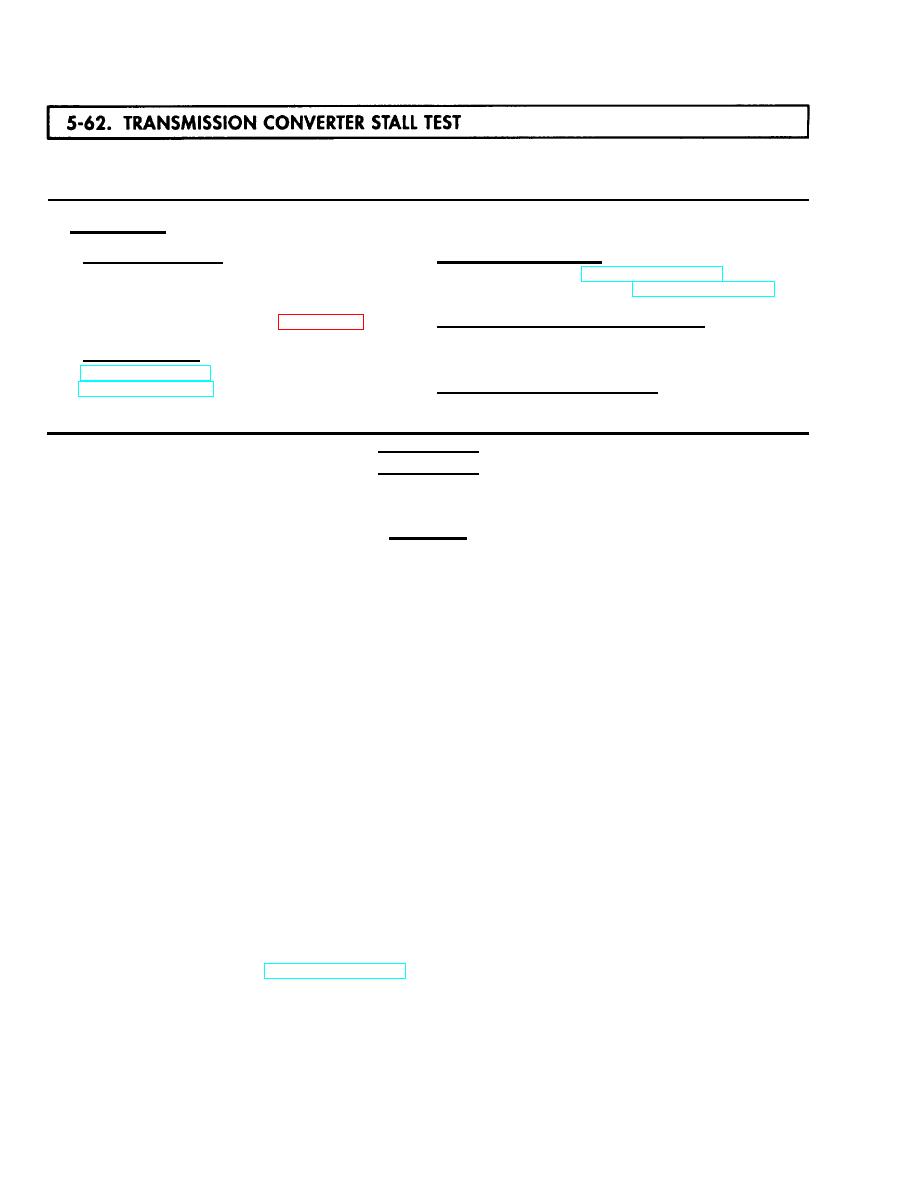
TM 9-2320-272-24-4
THIS TASK COVERS:
Forward Stall Test
INITIAL SETUP:
EQUIPMENT CONDITION
APPLICABLE MODELS
Parking brake set (TM 9-2320-272-10).
All
Wheels blocked (chocked) (TM 9-2320-272-10).
TOOLS
General mechanic's tool kit (Appendix E, Item 1) SPECIAL ENVIRONMENTAL CONDITIONS
Work area clean and free from blowing dirt and
REFERENCES (TM)
dust.
LO 9-2320-272-12
GENERAL SAFETY INSTRUCTIONS
TM 9-2320-272-10
TM 9-2320-272-24P
Do not allow anyone to stand in front of vehicle
when conducting a stall test.
WARNING
Do not allow anyone to stand in front of vehicle when conducting
stall test. Vehicle movement may cause injury to personnel.
CAUTION
Do not maintain the stalled condition longer than 30-second
intervals due to rapid heating of transmission oil. Observe
transmission oil temperature gauge. Normal operating range
is 120-220F (49-104C).
Observe engine coolant temperature gauge. Operating tempera-
ture is 175-195F (79-90C).
If oil temperature reaches 300F (148C), or if thirty seconds is
insufficient time to complete needed tests, transmission oil
temperature must be lowered or damage to transmission may
result.
Run engine at 1,200-1,500 rpm with transmission in neutral for
two minutes to cool oil between tests.
NOTE
The stall test is conducted when engine and/or transmission are
not performing satisfactorily The purpose of the stall test is to
determine if transmission or engine is the malfunctioning unit.
The vehicle's transmission will stay in first speed during the
stall tests regardless of transmission 5-4-3-2 and 1 quadrant
position. Transmission does not and cannot upshift because the
internal mechanism, output shaft, and governor are not
turning. The stall test checks the engine performance, converter
clutch operation or installation, and holding ability of the
converter one-way clutch.
Refer to TM 9-2320-272-10 for the following steps.
5-396


